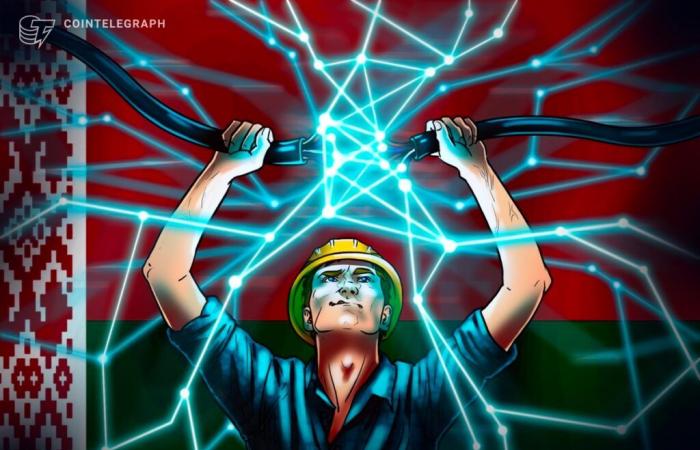On April 28, 2025, the Iberian Peninsula lived an unpublished episode: a massive electric blackout simultaneously affected Spain, Portugal, Andorra and parts of the south of France. For several hours millions of people were left without electricity supply. What began as a large -scale technical failure ended up revealing an even deeper and more systemic problem: the almost total electricity dependence and telecommunications to sustain something as basic as the ability to pay.
The cut not only left in the dark homes, hospitals and streets. He also disconnected mobile networks, interrupted Internet access and paralyzed digital financial services. The point of sale terminals did not work, the ATMs were out of service and the mobile payment applications were unusable. Shops and consumers, accustomed to an almost entirely digitized financial ecosystem, suddenly saw themselves without functional tools to perform daily transactions.
A DESILIENT INFRASTRUCTURE DIGITALIZATION
The digital transformation of payment systems is a process that is no longer going back. Immediate transfers, mobile payments and digital wallets are an integral part of contemporary economic life. To this environment is now added the development of the digital euro, a currency issued by the European Central bank designed to complement the cash in the new monetary ecosystem.
However, this transition (although necessary) is based on a previous condition: the existence of a critical infrastructure that works stable and safely. The blackout made it clear that this condition cannot be taken for granted.
In the absence of energy and connectivity, even the most sophisticated systems become useless. The digital is not ethereal: it needs servers, networks, loaded devices, active antennas. Without these elements, access to money or even the very idea of ”having money” becomes an inaccessible promise, at least temporarily.
What is a CBDC and what role can you play before a mass blackout?
A CBDC (for its acronym, Central Bank Digital Currency) is a digital currency directly issued by a central bank, designed to coexist with cash and traditional bank deposits. Unlike decentralized cryptocurrencies, a CBDC is supported by the State and seeks to maintain the stability of the financial system, improve financial inclusion and offer a safe public alternative in the digital payment ecosystem.
In the case of Europe, the digital euro project advances as an response to the growing digitalization of the economy. Its objective is to allow citizens and companies to make direct, safe and free electronic payments within the euro zone, even without the need for a traditional bank account.
However, the blackout in the Iberian Peninsula raises a crucial question: how would a CBDC work if a simultaneous interruption of the electricity and telecommunications supply occurs?
Although in theory a public digital currency can be designed to operate even without internet connection, through solutions such as cards or devices with NFC technology (short -range communication), they still require minimal power supply and compatible devices. In a scenario where electricity and connectivity fail in a generalized way, not even an advanced CBDC could guarantee its full functioning without physical backup or contingency mechanisms.
Therefore, the case of the Iberian blackout not only highlights the need to strengthen energy and telecommunications infrastructure, but also to design a truly resilient CBDC, with real and scalable offline operation caplines. Otherwise, the risk of temporary financial exclusion could be moved, or even aggravated, in a society where the cash has been completely replaced.
Social vulnerability in crisis contexts
These types of failures do not affect everyone equally. While some people have generators, portable batteries or alternatives to connect, others especially in rural areas or more disadvantaged sectors depend completely on what the public system provides. In these contexts, the impossibility of making a payment is not just an inconvenience: it can become a direct threat to well -being, when it comes to acquiring food, medicines or transport.
Payment systems are not simply a technological issue; They are a functional right in a modern society. And as such, they must have support routes to extraordinary situations. Today, this support is usually cash, but its use has decreased dramatically in some urban environments. The discussion posed by the blackout is not nostalgic or conservative, but practice: how do we guarantee the continuity of transactions when the infrastructure that sustains them fails?
A debate that goes beyond technology
It is not just about developing more advanced systems. It is about reinforcing the infrastructure that allows these systems to work. Digitization cannot be understood only as a technological evolution, but also as an institutional redesign that must include resilience, redundancy and accessibility criteria.
This implies:
- Strengthen electrical and telecommunications networks with criteria of operational continuity to emergencies.
- Develop insurance and accessible offline payment mechanisms, which allow operations to be carried out even without connection to the network.
- Maintain, at least in a complementary way, non -digital options that serve as a safeguard in exceptional situations.
- Include contingency plans for financial systems and payments such as essential infrastructure, such as hospitals or drinking water services.
A necessary reminder
The 2025 blackout was not caused by a cyber attack or by a natural catastrophe, but by a systemic failure in energy management. However, its effects remind us that even the most technologically advanced societies are fragile in the face of the interruption of basic services.
If a fully digital economy is aspired to, it is essential to ensure that the conditions that make it possible are protected and prepared for the unexpected. Because it’s not just about how we pay, but how we support the continuity of everyday life in contexts where digital has ceased to be optional to become a structure.
Clarification: the information and/or opinions issued in this article do not necessarily represent the views or the Cointelegraph editorial line. The information presented here should not be taken as a financial council or investment recommendation. Any investment and commercial movement imply risks and it is each person’s responsibility to do their proper investigation before making an investment decision.






